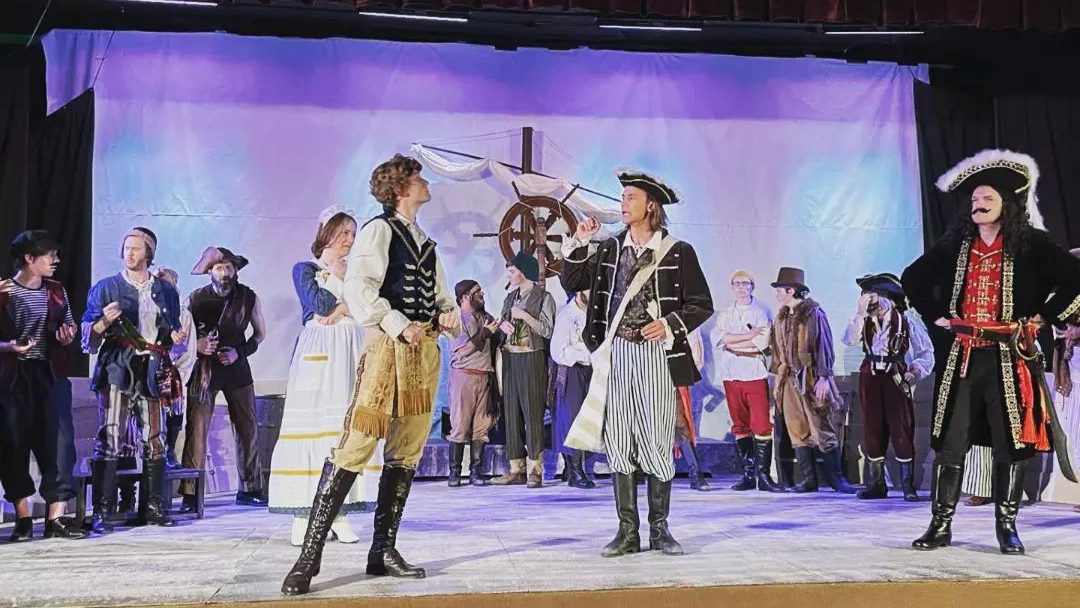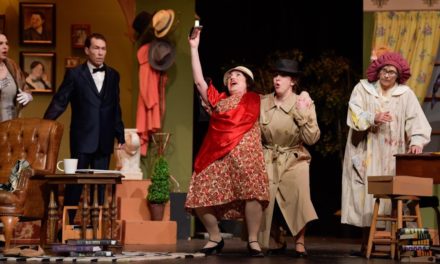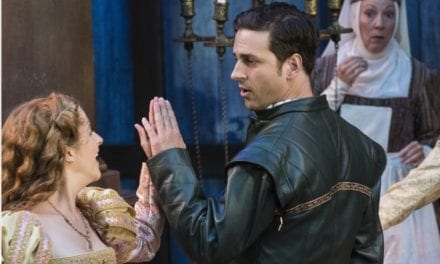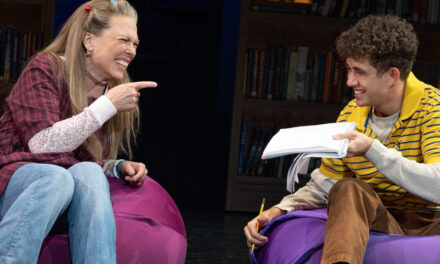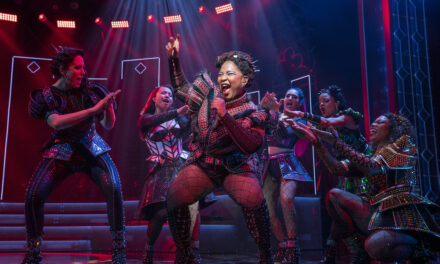HEBER CITY — The Pirates of Penzance is Gilbert and Sullivan‘s most enduring work, having entertained audiences for over 140 years. Timpanogos Valley Theatre has mounted one of the four currently running productions of this operetta in Utah, and their version is a pleasant way to get reacquainted with this spoof of British honor and formality.
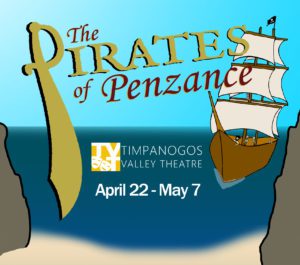
Show closes May 7, 2022.
The very idea of pirates in the resort town of Penzance would have struck 19th century English audiences as silly. And that frivolity is part of the show’s soul. Audiences should not take anything seriously in The Pirates of Penzance, and the productions are best when the show is full of laughs. Thankfully, directors David Liddell Thorpe and Daniel Clegg understood this and took it to heart. Every scene has bits of physical comedy that make the show a lighthearted romp, including the policemen holding up their extremely short sergeant (played by Jessica Wall) as they danced and a surprise guest appearance by Queen Victoria. The directors also added some verbal jokes, such as when the pirate king could not tell time, or a comment that “Scotland is the Texas of England.” These jokes were in the same tone as the humor of Pirates but with an enjoyable modern spin. Yet, the directors could also allow the show to have some heart, and I appreciated the quiet duet that Frederic and Mabel sang in the second act when they pledged their love to each other.
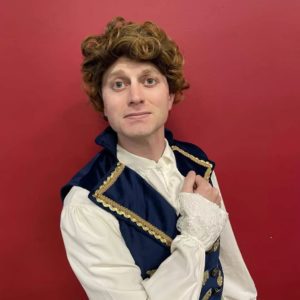
Michael Clegg as Frederic.
The hardest part of The Pirates of Penzance is the score, which draws upon the comic opera tradition. The vocal range of most lead roles in The Pirates of Penzance is much wider than what is usually seen in modern musical theatre. In this score, the sopranos are real sopranos, and the basses are real basses. This is where the cast struggled most, though not as much as I have seen in amateur productions previously. Most noticeably, the policemen had difficulty projecting their extremely low bass notes. I could also hear the actors’ voices getting tired as the second act progressed.
As Mabel, Tiffany Mortensen was the shining exception to this latter trend. Her operatically trained voice stayed firm and clear throughout the evening. her “Poor Wondering One” is a joy to listen to, and the mischievous smile she has as she begins the song shows that Mabel is going to take charge of the scene.
Michael Clegg stars as the young pirate apprentice Frederic. He has an eager acting style that suits the character well and is satisfying to watch for an evening. Michael Clegg has a firm presence on the stage, and he never allowed himself to be overwhelmed by the dozens of other people on stage. His confidence served him well as a leading actor. He needed that stage presence because Daniel Clegg in the role of the pirate king was often working hard to steal the scene. The pirate king is a plum role, and the fun that Daniel Clegg had strutting around the stage and leading a band of pirates was obvious.

Daniel Clegg as the Pirate King.
Two notable supporting actors were Nolan Mitchell as Major General Stanley and Joni Olson as Frederic’s nurse, Ruth. Mitchell probably has the most pressure on him because his character’s song, “I am the Very Model of a Modern Major-General” is well known, even among people who have never seen The Pirates of Penzance before. Mitchell executes the song well, and his quick, rigid movements matched the tone of the song perfectly. Olson was burdened with a lot of the exposition in the first act, and she handled it admirably well. After that point, Olson let loose and gave an energetic performance that strengthened the evening. (She could have done without the old age makeup, though.)
The most notable visual component of the play is the costumes, designed by Kristen Hughes. She dressed Frederic in blue vest, tan pants, and knee-high brown boots that created a striking silhouette. This helped him stand out from the pirates, who were dressed in looser clothing and with a color palette dominated by reds, blacks, and browns. In the first act, Hughes gave the women in the ensemble pastel dresses cut in Victorian fashion and trimmed amply with lace. Those costumes emphasized the women’s femininity and were a nice visual reinforcement of the high soprano singing and dainty movements created by choreographer Christie Moulton. In the second act, Hughes dressed the women in nightgowns (in accordance with the script), but gave each a colored ribbon that helped individualize each actress and prevented them from looking like a massless blob of white cloth.
The Pirates of Penzance is a difficult show for amateur companies, but Timpanogos Valley Theater had well-placed confidence in its directors, cast, and designers. These hard-working volunteers created a pleasant evening of laughs and fun for both audience and performers.

